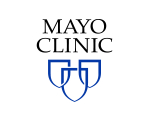Adipose-Derived Stromal Cells (ASC's) and Pressure Ulcers
| Status: | Recruiting |
|---|---|
| Conditions: | Skin and Soft Tissue Infections, Gastrointestinal |
| Therapuetic Areas: | Dermatology / Plastic Surgery, Gastroenterology |
| Healthy: | No |
| Age Range: | 18 - Any |
| Updated: | 8/17/2018 |
| Start Date: | July 2015 |
| End Date: | July 2020 |
| Contact: | Houssam Farres, MD |
| Email: | farres.houssam@mayo.edu |
| Phone: | 904-953-2077 |
A PILOT STUDY: EVALUATING THE SAFETY AND FEASIBILITY OF USING AUTOLOGOUS ADIPOSE-DERIVED STROMAL CELLS (ASCs) ON ADULTS WITH STAGE III OR IV PRESSURE ULCERS
This pilot study of 12 patients (6 control, 6 experimental) will test the safety and efficacy
of applying autologous, adipose-derived stromal cells (ASCs), uncultured, on a Stage III or
IV pressure ulcer. Patients in both groups would undergo a minimal risk liposuction procedure
to withdraw 50-100 cc of adipose tissue. The tissue would be processed to extract the stromal
layer of cells that contain stem cells. The ASCs would be injected into a fibrin sealant to
be applied to the wound. Patients would be followed for 6 weeks to assess wound healing and
tolerance of the treatment.
of applying autologous, adipose-derived stromal cells (ASCs), uncultured, on a Stage III or
IV pressure ulcer. Patients in both groups would undergo a minimal risk liposuction procedure
to withdraw 50-100 cc of adipose tissue. The tissue would be processed to extract the stromal
layer of cells that contain stem cells. The ASCs would be injected into a fibrin sealant to
be applied to the wound. Patients would be followed for 6 weeks to assess wound healing and
tolerance of the treatment.
Wound healing for Stage III and IV pressure ulcers can take four to six weeks or longer and
cost upwards of $40,000 to treat. Past studies have shown that adipose tissue contains
progenitor cells or regenerative cells that can release multiple angiogenic growth factors
and cytokines including vascular endothelial growth factor (VEGF), hepatocyte growth factor
(HGF) and chemokine stromal cell-derived factor-1 (SDF-1). A current literature review
revealed that there is research related to use of stem cells to enhance wound healing, in
particular with ischemic or radiation-induced ulcers. However, there is limited research
completed on use of stem cells or ASCs with pressure ulcers. The goal is to heal pressure
ulcers faster and prevent further complications using the patient's own natural ASCs.
cost upwards of $40,000 to treat. Past studies have shown that adipose tissue contains
progenitor cells or regenerative cells that can release multiple angiogenic growth factors
and cytokines including vascular endothelial growth factor (VEGF), hepatocyte growth factor
(HGF) and chemokine stromal cell-derived factor-1 (SDF-1). A current literature review
revealed that there is research related to use of stem cells to enhance wound healing, in
particular with ischemic or radiation-induced ulcers. However, there is limited research
completed on use of stem cells or ASCs with pressure ulcers. The goal is to heal pressure
ulcers faster and prevent further complications using the patient's own natural ASCs.
Inclusion Criteria
- Males and females
- Stage III or Stage IV pressure ulcers measuring 5 cc - 36 cc in volume (as measured by
filling the wound with Normal Saline).
- Inpatient or outpatient treatment of pressure ulcers
- Co-morbidities may include:
- Peripheral Vascular Disease (PVD)
- Coronary Artery Disease (CAD)
- Chronic Renal Disease (CRD)
- Chronic Liver Disease (CLD)
- Hypertension (HTN)
- Diabetes
- The ability of subjects to give appropriate consent or have an appropriate
representative available to do so
- The ability of subjects to return for weekly wound assessments
Exclusion Criteria
- Patients with allergies to TISSEEL, Tegaderm, or silicon
- Diabetics with poor glucose metabolic control (HbA1c > 9)
- Target wounds that are in close proximity to potential cancerous lesions
- Patients who require Negative Pressure Wound Therapy (NPWT), limb amputation, or
surgical intervention at the target wound at the time of screening
- Wounds located on the face
- Patients with Stage 5 or 6 Peripheral Vascular disease (specifically, wounds that are
caused by peripheral vascular disease such as leg ulcers)
- Wounds caused by diabetes mellitus (diabetic foot ulcers).
- BMI of <16 Clinical signs of critical colonization or local infection
- Prolonged (> 6 months) use of steroids
- Patients on active regimen of chemotherapy
- Patients receiving radiation in proximity of wound
- Decompensated chronic liver disease
We found this trial at
1
site
4500 San Pablo Rd S
Jacksonville, Florida 32224
Jacksonville, Florida 32224
(904) 953-2000

Principal Investigator: Houssam Farres, MD
Phone: 904-953-2077
Mayo Clinic Florida Thousands of people come to Mayo Clinic in Jacksonville, Fla., annually for...
Click here to add this to my saved trials